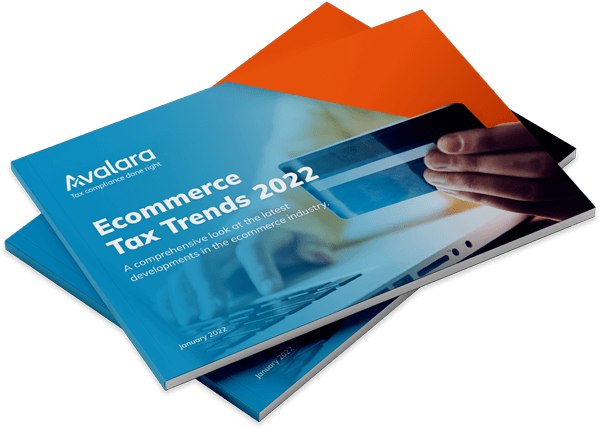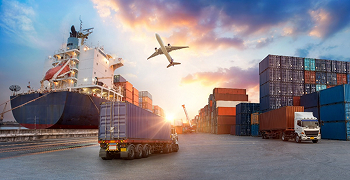
U.S. Sales Tax Exemptions 101
Any European business that begins selling into the United States quickly learns that U.S. sales tax is very, very different from VAT. There are several elements that make compliance in America more complex. One example is the number of tax jurisdictions in the U.S. — since tax rates differ between states, counties and even cities, there are over 12,000 tax jurisdictions.
Another complication for EU sellers in the U.S. is sales tax exemptions. Tax-exempt entities and products are less common in EU tax rules (although they still exist), and businesses tend to have less responsibility regarding exemptions. In the U.S., however, there is a lot a business owner needs to know to complete a tax-exempt sale in a compliant fashion.
Fortunately, this article can help you understand how the process works. We’ll look at a range of compliance topics, including how exemption certificates function, the kinds of transactions and buyers that are exempt, and how automation can help you stay tax compliant during tax-exempt transactions.
Key takeaways
Managing sales tax exemptions is complex for businesses due to varying rules across states and the need to document each exempt transaction accurately.
Exemptions may apply based on who the buyer is, how the product is used, or the type of product being sold.
Maintaining valid exemption certificates is essential for compliance, and automation can help reduce manual effort and audit risk.
What are tax-exempt transactions?
While there are a lot of complexities in the specific rules of tax-exempt transactions, it can be summed up fairly simply: under U.S. sales tax law, some buyers are exempt from paying tax, and some products are exempt from having tax applied to them. One complexity that’s important to note, however, is that as with any U.S. tax ruling, who and what are tax exempt can differ between states and counties.
The three types of U.S. sales tax exemptions
For the most part, sales tax exemptions can be divided into three categories:
1. Exemptions based on the type of item sold
While states may have differing opinions on the finer points of tax legislation, they all agree there are certain commodities that individuals must purchase to survive. As such, most states offer U.S. sales tax exemptions on these items.
However, it’s important to note that these exemptions are product-specific: for example, food may be an essential commodity, but not every food item is tax-exempt. States that don't make essential commodities fully tax-exempt often impose a lower tax rate on them, but this varies between states: for instance, Alabama still imposes the full state sales tax rate on all groceries (i.e. food purchased in supermarkets).
2. Exemptions based on the purchaser
The nature of the purchaser themselves may warrant a tax-exempt transaction, even if the goods being purchased are normally taxable. If your business doesn’t sell tax-exempt items, sales to tax-exempt entities are likely the most common reason you won’t charge sales tax.
In these instances, the purchaser is responsible for announcing that they don’t have to pay tax. In turn, it’s the seller’s responsibility to request the purchaser’s U.S. sales tax exemption certificate to prove the tax exemption.
3. Exemptions based on use
Purchases of products that will support certain pivotal industries or help activities performed for the benefit of the greater community are exempt from U.S. sales tax.
As with purchases made by tax-exempt entities, products that normally aren’t tax-exempt can become tax-exempt in these instances. Additionally, use-based exemptions must be proven by the purchaser by presenting an exemption certificate.
Examples of tax-exempt transactions
Below are a few examples of when a transaction would become tax-exempt. However, while the broad categories we’ve listed will apply to almost every state, you must research the specific tax laws of any state where you have tax obligations to ensure you have a complete understanding.
- Item-based exemptions:
- Food: As stated above, only essential food products are exempt, so food bought in the supermarket is exempt, but a restaurant meal is not.
- Clothing: In most jurisdictions, lower-priced clothing is tax-exempt, while branded and luxury clothing can be taxed.
- Prescription medicines: Illinois is the only state that taxes prescription medicine, at a reduced rate of 1%.
- Medical devices: Only essential medical devices such as pacemakers and prosthetic limbs are sales tax-exempt.
- Purchaser-based exemptions:
- Nonprofits: Not-for-profit organisations are exempt from paying income tax in any state, but are also often exempt from sales tax. These entities are often referred to as 501 (c) organisations, and the category includes institutions from charities to schools and churches.
- State and federal agencies: In a rare example of a law that applies throughout America, states cannot tax sales that are made to the federal government or its various agencies. In many states, a similar law exists for sales to the state and its agencies. Sometimes even individual cities will apply this type of exemption.
- Use-based exemptions:
- Pivotal industries: Products such as machinery related to agriculture, manufacturing, or industrial processing are tax-exempt. The definition of “pivotal” varies depending on a state’s economy; many farming states offer exemptions for sales of goods used to produce food for human or animal consumption.
- Community benefit: Exactly what types of activity benefit the community is defined by the tax authorities, but common examples include efforts to boost the local economy (such as industrial development) or improve public health (such as pollution control).
Handling U.S. sales tax exemption certificates
As we stated above, in use-based or purchaser-based tax exemptions, the purchaser must be able to provide a certificate documenting the reasons for the exemption to the seller. Certificates are not required when purchasing tax-exempt products.
As with most other points of U.S. tax law, the exact rules for certificates vary. Some states require a certificate for each transaction, but most allow for blanket certificates which are valid for purchases made over a certain period of time.
Importantly, sellers are responsible for verifying exemption certificates. If you are selling goods and the purchaser claims that they’re tax-exempt, you need to check the validity of their U.S. sales tax exemption certificate. You need to confirm the reason for the exemption is valid and that the certificate isn’t expired. Not collecting tax despite an exemption certificate being expired is a common mistake.
Archiving exemption certificates is crucial in case your business is ever audited. If you fail to remit the appropriate amount of tax, one of the first things an auditor will do is request exemption certificates. Presenting incomplete, incorrect, or invalid certificates will result in the business being charged for the missing sales tax.
However, since most auditors use a test period audit method for auditing, the sales tax charged by the auditor could be much more than the actual amount the business failed to pay. The test period method means individual transactions are not counted — the missing tax from discrepancies is simply estimated for a particular period based on a small sample size.
Tracking exemptions the easy way
As certificate errors can be extremely costly, it’s hugely important that human error doesn’t lead to mistakes when archiving and verifying certificates.
Avalara Exemption Certificate Management provides an easy solution. With Avalara’s help, businesses can automate how they request, verify, archive and manage exemption certificates. It’s particularly useful for EU businesses that may find U.S. sales tax rules complicated.
If you’re looking for additional information on managing exemption certificates, check out our latest webinar: Managing tax-exempt sales 101.
FAQ
What items in the US are not subject to sales tax?
Most states exempt necessities like food and prescription medicines. These are typically tax free or taxed at a reduced rate — though specifics vary by state.
Which US states don’t have sales tax?
Five states — Alaska, Delaware, Montana, New Hampshire, and Oregon — have no statewide sales tax. However, some allow local jurisdictions to impose their own taxe
Which US states have no property tax?
No U.S. state is entirely free of property taxes. All 50 states levy property taxes, typically assessed and collected at the local level.
Ecommerce Tax Trends Report 2022
Get a comprehensive look at the latest developments in the ecommerce industry.

Stay up to date
Sign up today for our free newsletter and receive the latest indirect tax updates impacting businesses selling internationally straight to your inbox.



